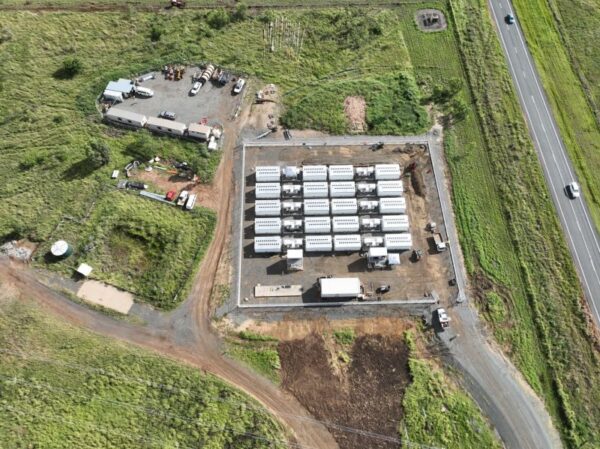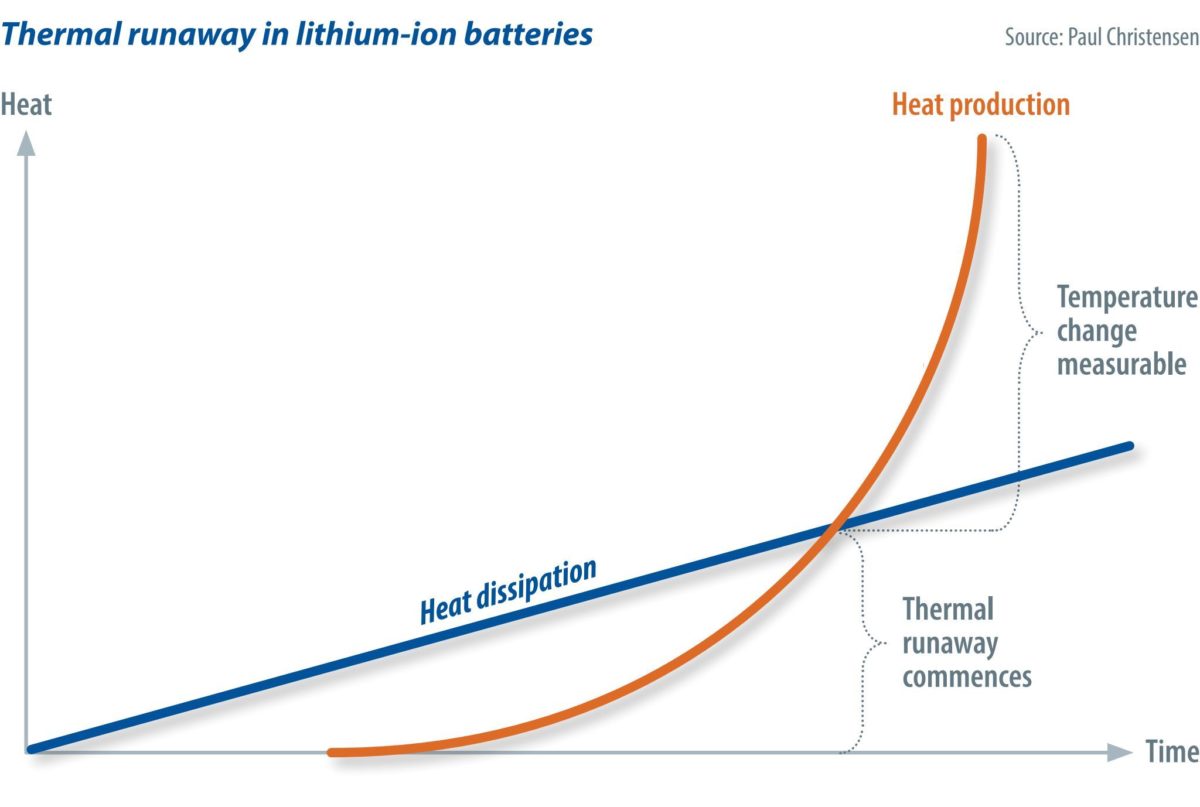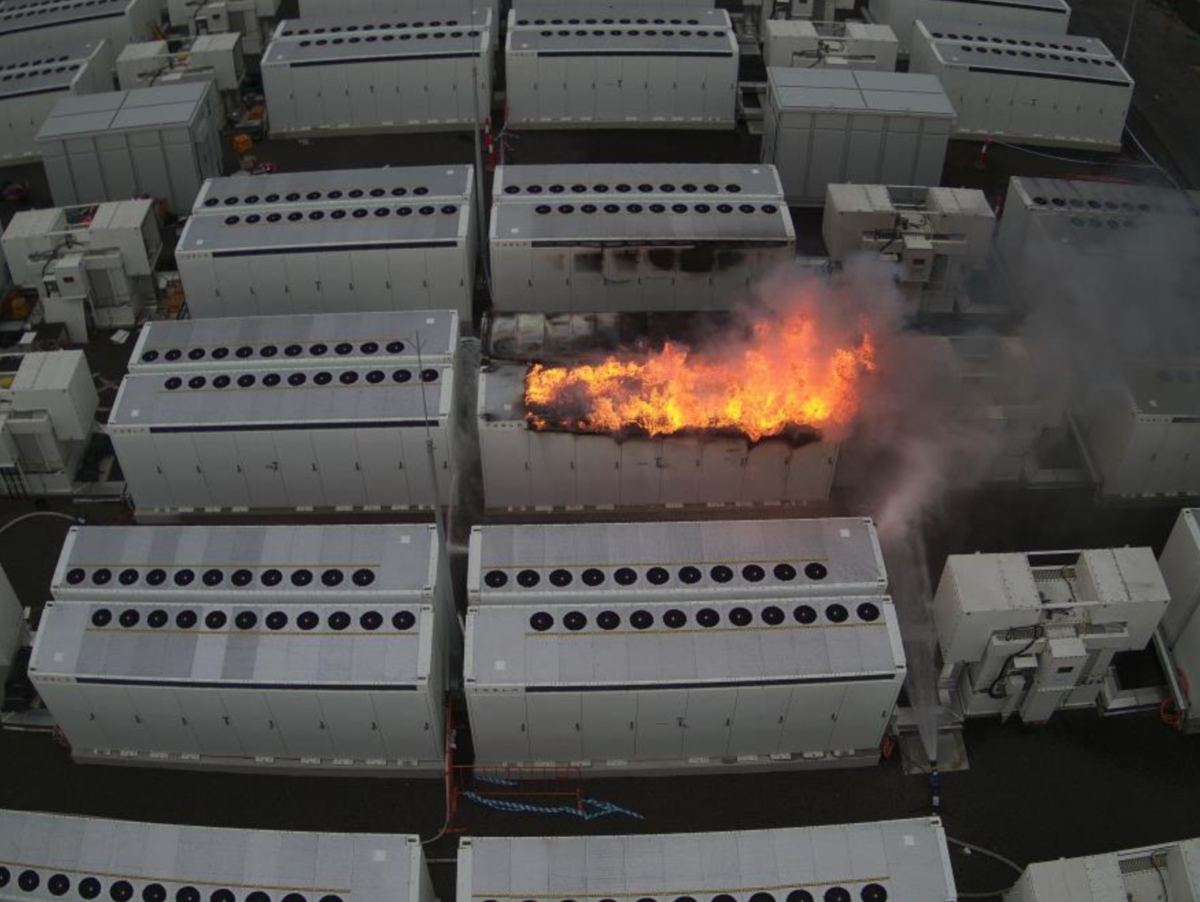The Queensland Fire and Emergency Services crews remain on scene after arriving at the lithium battery facility around 7.45pm on September 26.
The fire is believed to have only impacted one of the 40 Tesla Megapack modules at the Bouldercombe battery, which was in its commissioning stages.
In its latest update at 8.20am Wednesday morning, Queensland’s Fire and Rescue Service (QFRS) said crews remain at the site on Childs Avenue, Bouldercombe, roughly 20 kilometres south of Rockhampton on Queensland’s midcoast.
‘one of 40 Tesla Megapack 2.0 battery modules at Bouldercombe battery project, AU, caught fire Wednesday night…project in commissioning process…had been operating at various “hold points”…fire currently contained…low-lying smoke expected to persist in area over coming hours’ pic.twitter.com/qwA5iu0MUl
— Commercial Solar Guy (@SolarInMASS) September 26, 2023
“The fire is currently contained with crews continuing to monitor the situation,” the QFRS said.“Low-lying smoke is expected to persist in the area over the coming hours.” The fire service noted there has been “large amounts” smoke, urging residents to keep windows and doors shut.
The 50 MW / 100 MWh Bouldercombe battery is owned by Genex Power – the $60 million project marked the company’s first foray into big batteries. The fire is not believed to have impacted other infrastructure, including the Powerlink substation next to the battery facility.
The cause of the fire remains unknown, and the site has been disconnected from the grid.
In a statement Genex Power said: “Genex is working with Tesla Motors Australia Pty Ltd and Consolidated Power Projects Pty Ltd to investigate the root cause of the incident.”
BOULDERCOMBE – structure fire as at 8.20am Wed 27 Sept. FRS crews remain on scene of a structure fire on Childs Avenue, Bouldercombe. The fire is currently contained with crews continuing to monitor the situation: https://t.co/XKUv0a8i45
— Qld Fire & Emergency (@QldFES) September 26, 2023
In 2021, a Tesla Megapack battery unit also caught fire and burned for three days in the final stages of completing the Victorian big battery facility in Moorabool, Victoria.
A year later, in 2022, it was widely reported that Tesla had switched its Megapack battery cell chemistry to lithium-iron-phosphate or LFP cells, which are more fire resistant than earlier makeups.
It is not known if the Bouldercombe units were fitted with LFP cells or an earlier Tesla Megapack technology, however.

Image: Genex Power
Fires in lithium-ion batteries are tricky for fire services to bring under control as they emit toxic gases and water is not recommended to bring them under control. “Firefighters are trained not to open the battery casing for water application to the cells due to the hazards of high voltage stranded energy and risk of electrocution,” a spokesperson from Fire and Rescue NSW told pv magazine, which covered the Victorian big battery fire and lithium battery risks at length in a 2021 edition.
“The preferred option as advocated by manufacturers is to allow the battery to completely burn out, removing all hazards,” the spokesperson added at the time.

Coming back to Bouldercombe, it is believed the Queensland fire services have treated this fire similarly.
Watt Clarity looked at the Bouldercombe battery’s bidding behaviour in the lead up to the fire. It noted the unit had run for around two hours before the fire, with its first output logged at 18:05 and last output at 19:55 local time. It was bidding at $60/MWh.
“It [Bouldercombe battery unit] appears to have a Dispatch Error of ~4MW from 19:35 as it missed its 48 MW target (Final MW of 44 MW) for the remaining dispatch intervals,” Watt Clarity noted, questioning whether this was a result of whatever led to fire.
Tesla has not only supplied the Bouldercombe battery technology, but had also penned an offtake deal with Genex Power for the output of the facility. Under the offtake deal, Tesla agreed to operate the Bouldercombe project using its proprietary algorithm-based bidding system, Autobidder. At the completion of the eight-year deal, Genex is set to enter into a license agreement with Tesla to operate Autobidder on the project.
This content is protected by copyright and may not be reused. If you want to cooperate with us and would like to reuse some of our content, please contact: editors@pv-magazine.com.









4 comments
By submitting this form you agree to pv magazine using your data for the purposes of publishing your comment.
Your personal data will only be disclosed or otherwise transmitted to third parties for the purposes of spam filtering or if this is necessary for technical maintenance of the website. Any other transfer to third parties will not take place unless this is justified on the basis of applicable data protection regulations or if pv magazine is legally obliged to do so.
You may revoke this consent at any time with effect for the future, in which case your personal data will be deleted immediately. Otherwise, your data will be deleted if pv magazine has processed your request or the purpose of data storage is fulfilled.
Further information on data privacy can be found in our Data Protection Policy.